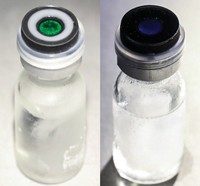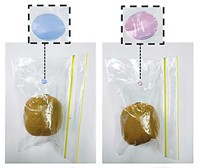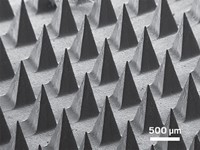Advertisement
Grab your lab coat. Let's get started
Welcome!
Welcome!
Create an account below to get 6 C&EN articles per month, receive newsletters and more - all free.
It seems this is your first time logging in online. Please enter the following information to continue.
As an ACS member you automatically get access to this site. All we need is few more details to create your reading experience.
Not you? Sign in with a different account.
Not you? Sign in with a different account.
ERROR 1
ERROR 1
ERROR 2
ERROR 2
ERROR 2
ERROR 2
ERROR 2
Password and Confirm password must match.
If you have an ACS member number, please enter it here so we can link this account to your membership. (optional)
ERROR 2
ACS values your privacy. By submitting your information, you are gaining access to C&EN and subscribing to our weekly newsletter. We use the information you provide to make your reading experience better, and we will never sell your data to third party members.
Analytical Chemistry
ACS Meeting News: Color-Changing Gels Track Food Quality
Nano-based materials indicate age, temperature history of perishables
by Lauren K. Wolf
March 21, 2014
| A version of this story appeared in
Volume 92, Issue 12
If you’ve ever wondered whether you should drink a carton of milk a week past its sell-by date or whether the six-month-old chicken breast sitting in the freezer is still good, help might be on the way.
Researchers in China have developed an inexpensive gelatinlike material that evolves from red to orange to green as food or beverages are exposed to temperatures that encourage bacteria growth. The gels would be attached to the packaging material. Once the gel takes on a deep-green hue, the scientists say, the product should be thrown away.
Postdoc Chao Zhang of the Chinese University of Hong Kong (CUHK) reported on these food-quality indicators yesterday at the American Chemical Society national meeting in Dallas.
The gels owe their color-changing ability to the gold nanorods and silver chloride embedded within. Just after they’re manufactured, the indicators appear red because their nanorods are uncoated. Over time, though, silver ions deposit onto the rods, turning the gels green. Zhang’s team—which also includes CUHK’s Jianfang Wang and Chun-Hua Yan of Peking University, in Beijing—described the gels’ basic mechanism last year in ACS Nano (2013, DOI: 10.1021/nn401266u).

The researchers matched the gels’ rate of color change to the rate at which milk grows Escherichia coli by adding molecules, such as ascorbic acid, that affect how fast silver ions deposit onto the nanorods. Similarly, the team added other molecules, such as lactic acid, so that the gels’ color changes tracked temperature changes to milk. For instance, if a product is exposed to a temperature high enough to encourage rapid E. coli growth, these molecules speed up the gels’ red-to-green transition.
“You have to know the entire temperature history of a food product to know its quality,” Zhang said. Consumers usually don’t know whether a carton of milk has accidently been removed from refrigeration during the journey from farm to supermarket, so estimated expiration dates can sometimes be inaccurate, he explained.

“The ability to match time and temperature kinetics to give a clear, actionable indicator is impressive,” said Timothy M. Swager, a chemist at Massachusetts Institute of Technology.
Zhang’s team hopes to tailor the gels for a variety of foods and beverages by tuning the concentrations of the indicators’ ingredients. He reported to the Division of Colloid & Surface Chemistry that he’s also testing semiliquid formulations of the indicators that are easier to mass produce. The team has filed a patent for the technology in China and may eventually commercialize the indicators via Wang’s new company Nanoseedz.





Join the conversation
Contact the reporter
Submit a Letter to the Editor for publication
Engage with us on Twitter